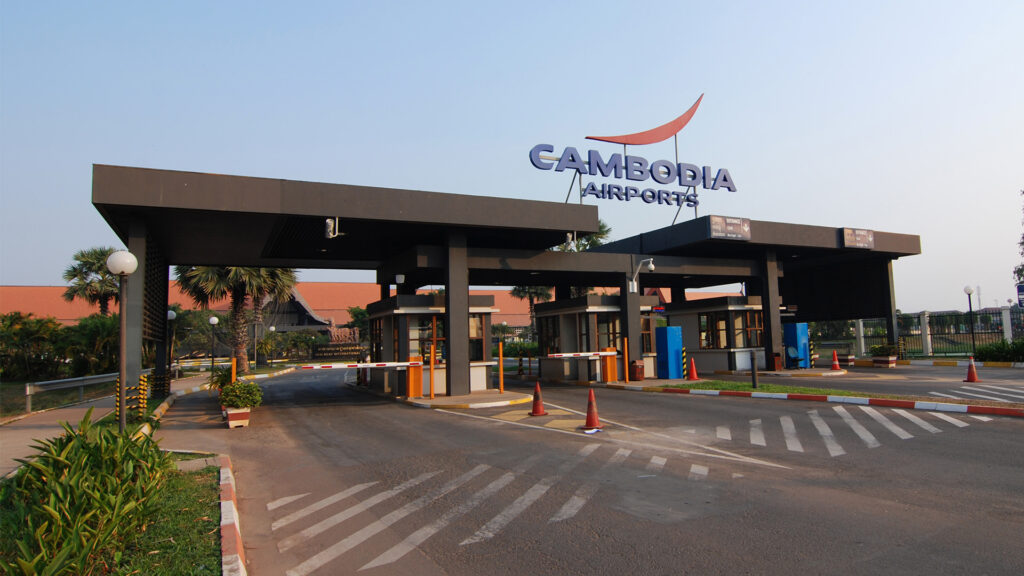
EU ETS update – “stopping the clock” – where do we go from here?
On 12 November 2012, the EU Commission announced that it is temporarily suspending the application of its controversial Emissions Trading Scheme as regards flights into and out of the European Union. Pressure had steadily mounted on the EU since the extension of the scheme to aviation in January 2012, but intensified as the planned April 2013 deadline for the first submission of allowances approached.
Opponents of the EU ETS argue that the scheme breaches the fundamental principle of international law, that each State has complete and exclusive sovereignty over the airspace above its territory, because carbon emissions are assessed over the entirety of the flight, including that portion entirely within another State’s airspace. In addition, it is argued that the EU ETS violates a number of provisions in the Chicago Convention and bilateral treaties between the EU and third countries. These arguments formed the basis of a legal challenge brought in the UK by a group of American and Canadian Airlines, supported by IATA and referred to the European Court of Justice, which held in December 2011 that the scheme was compatible with international law.
The ECJ’s decision provoked worldwide reaction from airlines, industry bodies and governments, escalating the dispute and engendering an increasingly vocal opposition at State level. By August 2012, the countries that opposed the extension of the scheme to aviation numbered 23. Among these States, China and the USA passed legislation prohibiting their carriers from complying with the scheme and the government of Saudi Arabia was reportedly in the process of doing likewise.
Against this background, and the realistic possibility of trade wars developing with a number of important trading partners at a time when many European economies are still in recession, it is perhaps no surprise that the Commission acted to alleviate some of the pressure.
This briefing will review exactly what has been announced by the Commission, how that announcement has been greeted by the international community and, perhaps most importantly, what carriers should be doing now and in the months ahead.
“Stopping the clock”
The Commission announced on 12 November that it is recommending the EU “stops the clock” when it comes to the enforcement of the inclusion of aviation in the EU ETS for flights to and from non-European countries. A draft decision was subsequently published and can be summarised as follows:
- No enforcement action will be taken against aircraft operators which do not meet the Directive’s reporting and compliance obligations before 1 January 2014, in respect of flights to or from aerodromes outside of the EU (including the EEA States, Switzerland and Croatia).
- This is conditional on the aircraft operator returning to its Administering Member State any free allowances it has received in 2012 that have been granted for such flights.
- The Directive’s reporting and compliance obligations continue to apply in full to flights between aerodromes in the EU.
The Commission has stressed that this is a temporary measure, designed to give space for and build on recent progress made by the International Civil Aviation Organization (ICAO). The explanatory notes accompanying the draft decision reinforce the message that obligations have been suspended, rather than waived, and that progress must be made at or before the ICAO Assembly in September 2013.
In effect, the EU has bought itself some time and may have re-directed some of the pressure towards ICAO in the process.
Practical impact – issues to consider
It is important to note that the Commission’s decision is a proposal at this stage and requires approval by the European Council and Parliament before it becomes legally binding. That should not be an issue in practice but it may take several months for the process to complete. However, the EU institutions must act to ensure that the decision has legislative effect in advance of April 2013 to avoid uncertainty at national level.
The practical application of the decision raises numerous potential issues and, without detailed guidance from the EU, one can only speculate as to how these will be addressed. Perhaps the most fundamental issue is the potential impact on EU carriers and, in particular, low cost carriers that operate very large numbers of daily services, in some circumstances entirely between EU airports. All of these services will be subject to the Directive’s reporting and compliance obligations. Arguably the effect of this will be to distort competition, something that the ECJ’s Advocate General expressly contemplated in her Opinion rejecting the legal challenge: “If the EU legislature had excluded airlines holding the nationality of a third country from the EU emissions trading scheme, those airlines would have obtained an unjustified competitive advantage over their European competitors.” She also recognised that excluding flights to or from an aerodrome in a third country from the EU ETS risked unequal treatment, contrary to the objective of the Directive.
It is entirely possible that a further legal challenge will follow given the potential impact on competition between the airlines, particularly in circumstances where this potential impact has already been expressly recognised by the Advocate General.
A separate issue concerns the temporary nature of the Commission’s decision and what happens when the clock starts ticking again on 1 January 2014. The Commission has stated that if ICAO fails to deliver before this deadline, the EU ETS will be applied “automatically”. But what will happen if measures are agreed at the ICAO Assembly in September 2013 but implementing such measures takes several years, as will surely be the case? Presumably, now that the Commission has accepted in principle that the scheme can be suspended, further suspensions are likely pending the implementation of measures agreed at the ICAO Assembly, however long that process may take. If that proves to be the case then European carriers (particularly low cost carriers) will continue to suffer.
International reaction to the Commission’s Decision Reaction to the Commission’s Decision from airlines and industry bodies has been mixed. IATA consider it represents “a significant step in the right direction” whilst the Association of Asia Pacific Airlines cautiously welcomed the news as did the International Air Cargo Association. In stark contrast, the European Regions Airline Association has warned that the Commission is effectively introducing a two-tier system that unfairly penalises many European carriers.
The response from the USA has been to pass into law its anti-ETS bill, which has now been signed by President Obama, following approval by the House of Representatives (on the day after the Commission announced the suspension). The legislation empowers the Secretary of Transportation to prohibit operators of US aircraft from participating in the ETS if doing so would not be “in the public interest”. The message from the US remains one of unequivocal non-acceptance of the scheme, and the temporary suspension has not changed anything in that regard.
What should carriers do now?
Against this uncertain background and pending further guidance from the Commission, the best advice for carriers is to continue monitoring, verifying and reporting emissions in exactly the same way as they have been doing. This will ensure that carriers are not prejudiced in the event that the suspension of the ETS is lifted in January 2014.
In order to benefit from the Commission’s Decision, carriers will have to return an amount of allowances corresponding to any free emissions allowances issued to them in 2012 in respect of all non-EU flights. Thus, carriers wishing to take advantage of the suspension will have to take positive action by returning these free allowances in order to avoid potential enforcement action. Recent guidance issued by the Commission confirms that carriers must purchase replacement 2012 aviation allowances if they have already sold any of the free allowances that they are required to surrender in order to benefit from the derogation. Further guidance on how this process will work and when the allowances should be returned is still awaited but carriers should not dispose of or sell any free allowances in the meantime.
A separate issue concerns the application of ETS surcharges on tickets. Some airlines have been imposing a levy on tickets for travel to and from EU airports as a means of combating the additional cost of purchasing allowances and complying with the scheme. This issue is already attracting some attention, with environmental groups levelling accusations of windfall profits against carriers who have imposed the surcharges. In principle, an ETS surcharge can still be imposed to reflect the continued cost of complying with the scheme, even in circumstances where allowances are not being purchased, but airlines should exercise caution and make sure the surcharge remains reasonable and justified. The Commission have implied that ETS surcharges should either be used to invest in carbon emissions reduction or returned to passengers.
Focus on ICAO – what does the future hold?
There is no doubt that the spotlight of this dispute will now shift onto ICAO, who will come under pressure to devise and agree measures that will satisfy the EU. That will not be an easy task – ICAO encompasses 191 Member States and reaching a consensus will be a challenging and time consuming process, particularly where such a divisive issue is concerned. Indeed, ICAO’s Secretary General has already cautioned that further delays beyond the September 2013 Assembly meeting cannot be ruled out.
That said, progress is clearly being made at ICAO as the Commission has recognised. ICAO has set up a high-level working group that is considering three possible global market-based measures, ranging from a straightforward carbon offsetting scheme to a global ETS. It is hoped that one of these three measures will be selected by March 2013 and a detailed framework (at the very least) will have been drafted for consideration at the September 2013 meeting. Expecting anything beyond this is perhaps unrealistic.
Whether or not the EU Emissions Trading Scheme can survive in the long term remains to be seen but that must be doubtful in light of these recent developments.
It will be obvious from this article that the regulation of aviation carbon emissions remains an extremely contentious subject. The Commission’s decision has been welcomed by many airlines but strongly criticised by others, who will surely continue to question what they perceive to be an unequal and anti-competitive proposal. ICAO must seize the opportunity afforded to devise measures that are focused on the important objective of reducing global emissions but are fair and consistent in their application. Failing that, this international dispute will resume with increased fervour in January 2014 when the Commission’s deadline expires and the clock ticks again.
Download a PDF version of ‘EU ETS update – “stopping the clock” – where do we go from here?’











